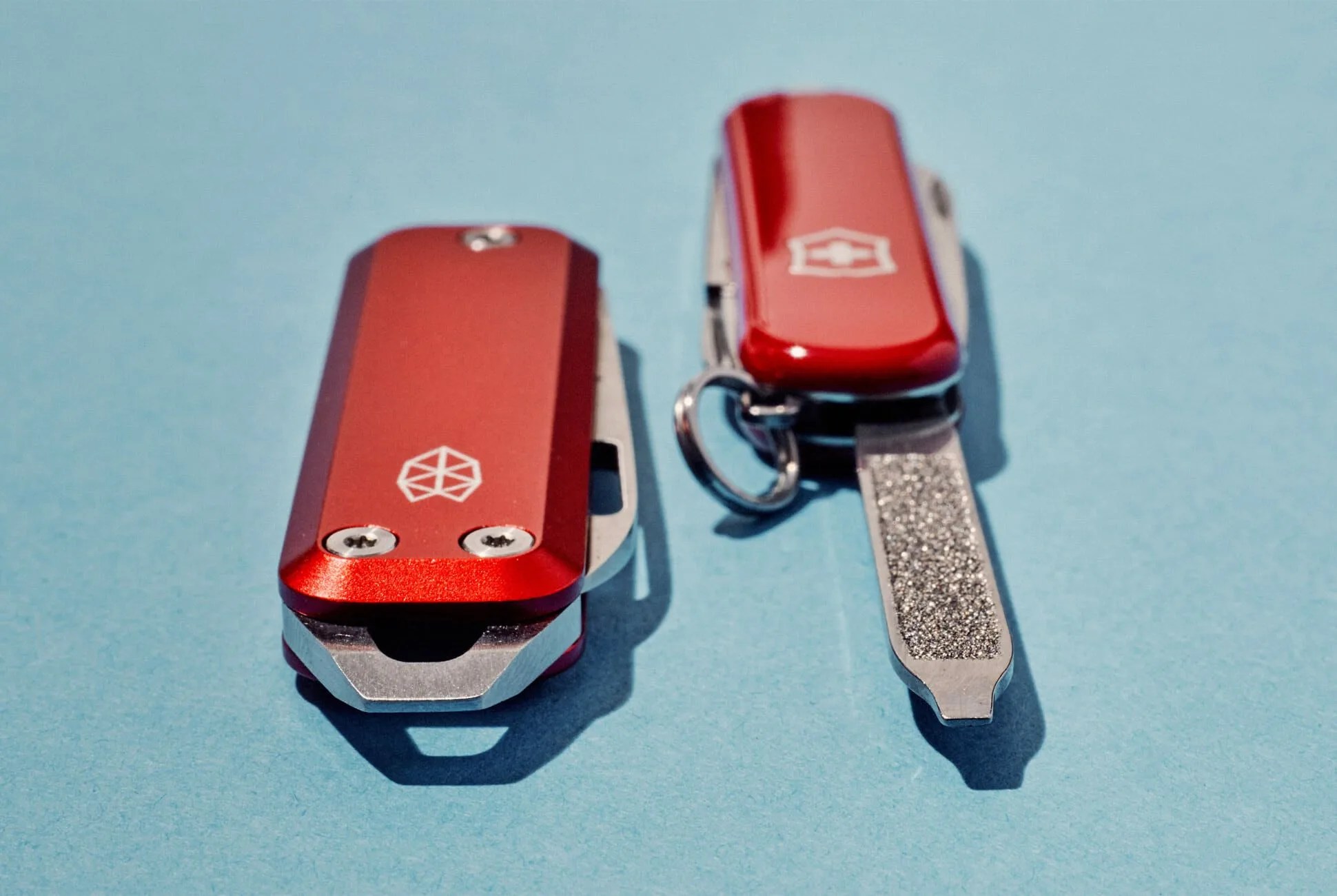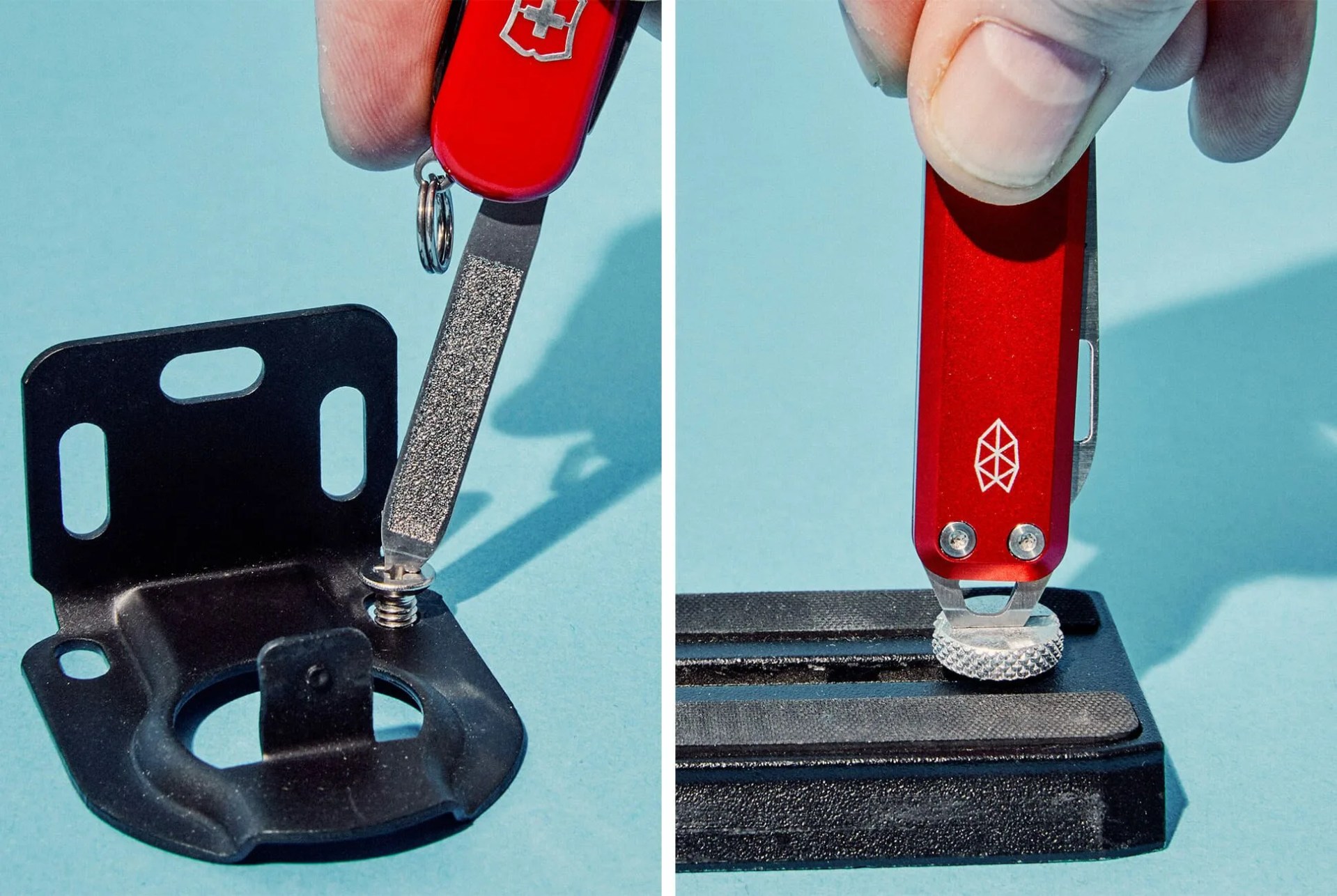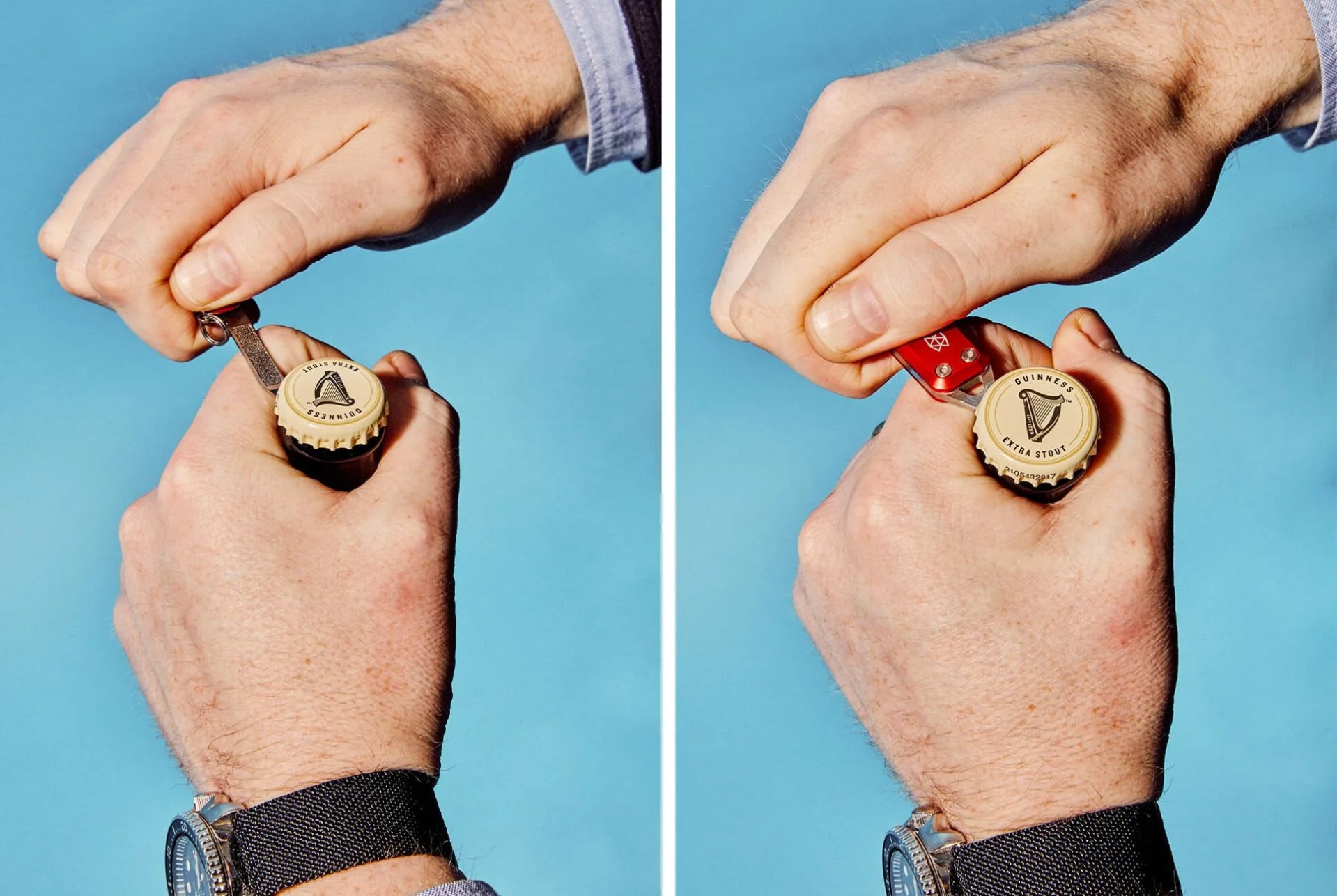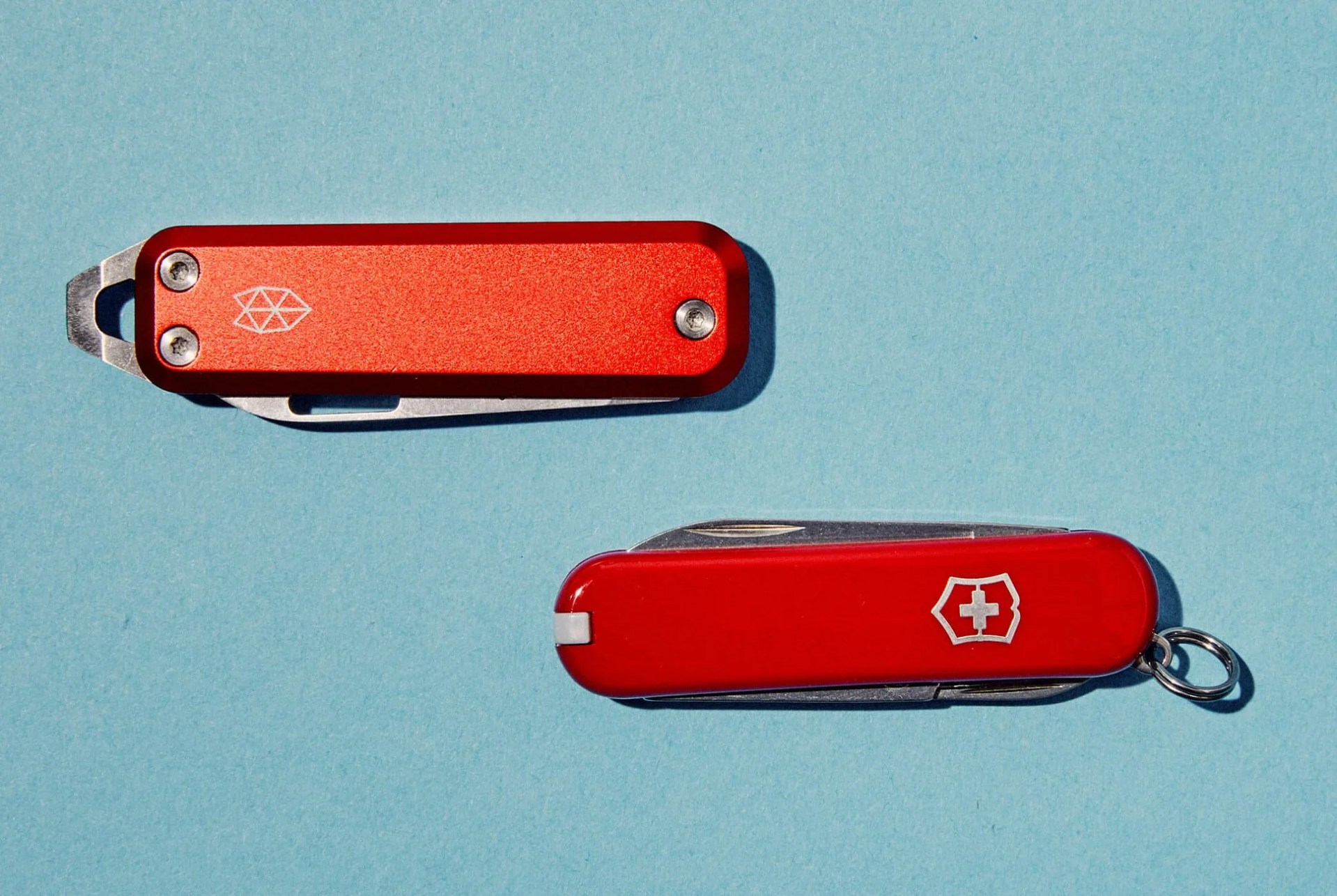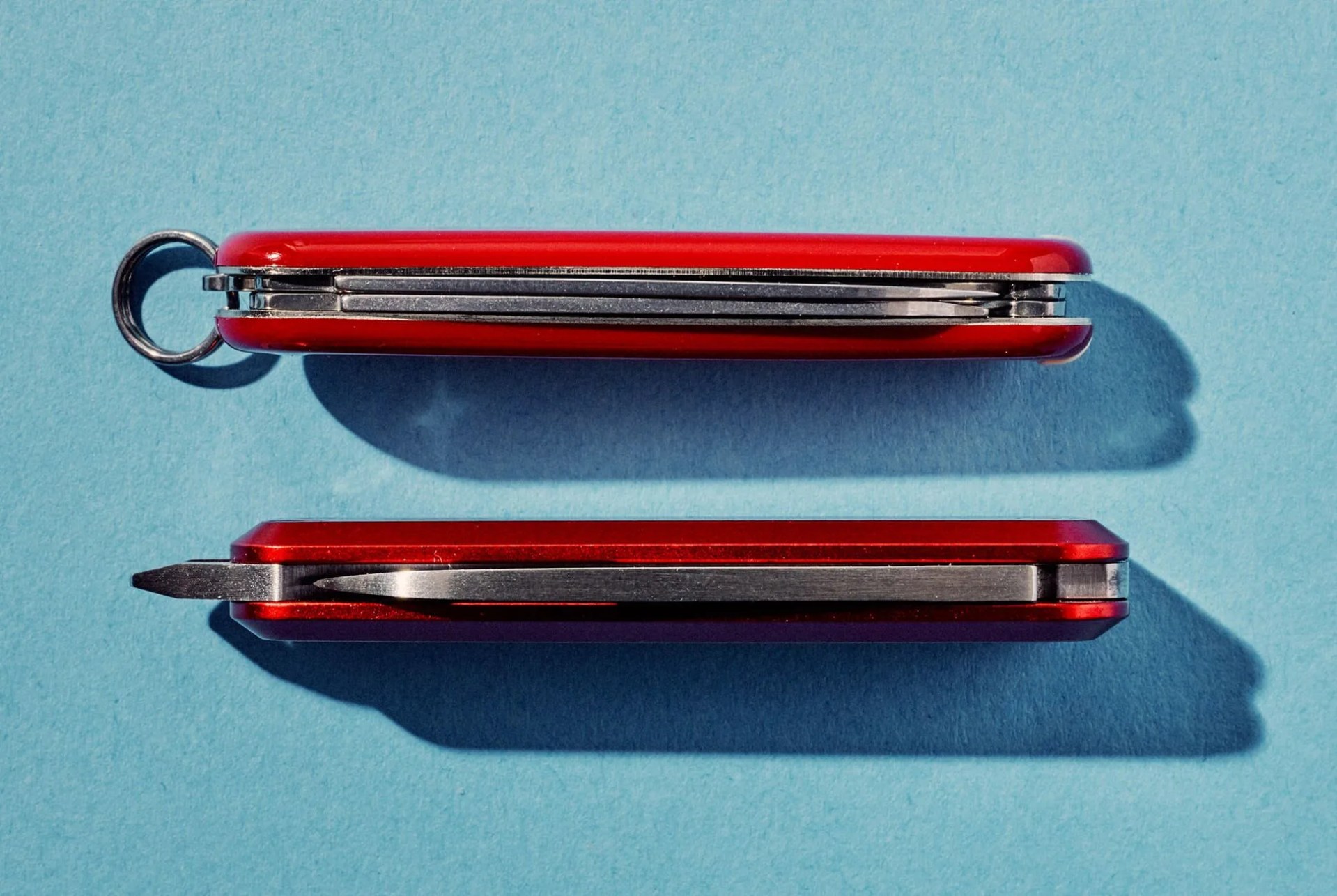Ever since The James Brand introduced its keychain folder, the Elko, we’ve been smitten. With great proportions, excellent design and undeniable utility, it’s no wonder that it’s found a fast home with Gear Patrol staffers. But like so many great products, the Elko is a re-interpretation of a classic: the keychain Swiss Army Knife by Victorinox.
Victorinox’s keychain Swiss Army Knife, or SAK for short, has remained largely unchanged for decades and is widely available online for less than $20. It is easily the heretofore-unrivaled king of keychain knives.
But despite all of the original SAK’s provenance, we began to wonder if it lived up to modern EDC use. This led us to ask, how would the iconic SAK perform when pitted against the Elko? And, as it retails for roughly three times the price, does the Elko deliver three times the oomph?
After consulting with our in-house knife aficionados and surveying 25 staffers, we settled on three simple everyday tasks that would test the strength, toughness and utility of the two knives; opening a box, tightening a screw and opening a bottle top. The knife with the highest marks would leave the ring the new keychain king.
Opening a Box
The strength of a blade, its resistance to corrosion and ability to hold an edge are important properties to consider when buying, but these aspects are more relevant when purchasing specialty knives that need to perform a specific task in a specific environment. A keychain knife is called upon to perform all sorts of quick cutting tasks in a wide array of settings. The most common use for our blades? Opening boxes of gear. As it turns out, it’s an excellent test for a simple folding knife.
